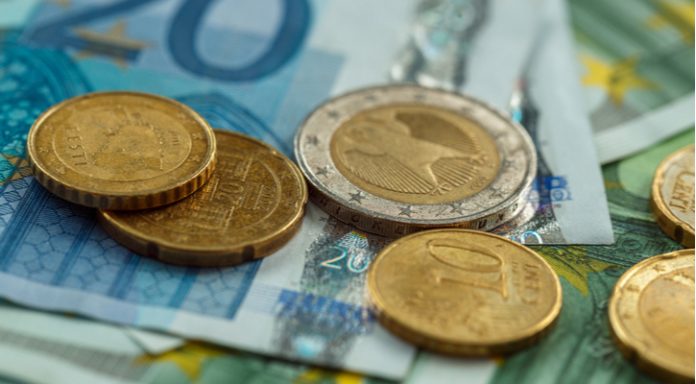The pound fell versus the dollar on Tuesday to a low of US$1.2941. This is just shy of the three-week low that the pound hit as the markets opened at the beginning of this week. The selloff came as a result of weak UK data combined with optimism over US wage growth.
| What do these figures mean? |
|---|
|
When measuring the value of a pair of currencies, one set equals 1 unit and the other shows the current equivalent. As the market moves, the amount will vary from minute to minute. For example, it could be written: 1 GBP = 1.28934 USD Here, £1 is equivalent to approximately $1.29. This specifically measures the pound’s worth against the dollar. If the US dollar amount increases in this pairing, it’s positive for the pound. Or, if you were looking at it the other way around: 1 USD = 0.77786 GBP In this example, $1 is equivalent to approximately £0.78. This measures the US dollar’s worth versus the British pound. If the sterling number gets larger, it’s good news for the dollar. |
UK construction activity expanding at its weakest pace in six months sent the pound lower. Construction activity dropped to 52.1 in September, unexpectedly down from August’s weak 52.9 reading. Brexit uncertainty remains the key factor hitting business investment decisions and the construction sector. Political uncertainty means firms are putting off taking decisions with many adopting a wait and see approach. This has sowed the construction sector down dramatically. As a result, the pound fell.
| Why does poor economic data drag on a country’s currency? |
|---|
| Slowing economic indicators point to a slowing economy. Weak economies have weaker currencies because institutions look to reduce investments in countries where growth prospects are low and then transfer money to countries with higher growth prospects. These institutions sell out of their investment and the local currency, thus increasing supply of the currency and pushing down the money’s worth. So, when a country or region has poor economic news, the value of the currency tends to fall. |
Brexit fears were also weighing on demand for the pound later in the day. Arlene Foster, the leader of the Democratic Unionist Party, the Northern Irish party which Theresa May relies on to make up her majority in Parliament, was very clear when she said that no North Sea border would be acceptable. There were rumours circulating that Theresa May was willing to compromise over regulatory checks in the North Sea. Following Arlene’s comments, Theresa May’s hands looked tied once again. This highlights the difficulties that exist in finding a solution to the Irish border.
Today Berit will continue to be in focus. Additionally, investors will look towards the release of UK service sector PMI’s. Analysts are expecting the data to show a slight decline in the dominant UK service sector. This could put more pressure on the pound.
Amazon Wage Hike Lifts Dollar
The US dollar climbed higher in the previous session as investors cheered some good news from Amazon the online retailer. Amazon vowed to increase its minimum wage to $15. Economists believe that other retailers may have to follow in Amazon’s footsteps and raise wages as well. US wages have remained relatively sluggish despite unemployment hitting multi decade lows. This could help give wage growth a boost if it spreads through the sector. As wages rise so does inflationary pressure and the probability of a rate hike.
| Why do raised interest rates boost a currency’s value? |
|---|
| Interest rates are key to understanding exchange rate movements. Those who have large sums of money to invest want the highest return on their investments. Higher interest rate environments tend to offer higher yields. So, if the interest rate or at least the interest rate expectation of a country is relatively higher compared to another, then it attracts more foreign capital investment. Large corporations and investors need local currency to invest. More local currency used then boosts the demand of that currency, pushing the value higher. |
Today investor attention will be back on the economic calendar. US non- manufacturing data is the highlight for dollar investors and could cause some volatility ahead of Friday’s jobs data.
This publication is provided for general information purposes only and is not intended to cover every aspect of the topics with which it deals. It is not intended to amount to advice on which you should rely. You must obtain professional or specialist advice before taking, or refraining from, any action on the basis of the content in this publication. The information in this publication does not constitute legal, tax or other professional advice from TransferWise Inc., Currency Live or its affiliates. Prior results do not guarantee a similar outcome. We make no representations, warranties or guarantees, whether express or implied, that the content in the publication is accurate, complete or up to date. Consult our risk warning page for more details.
This article was initially published on TransferWise.com from the same author. The content at Currency Live is the sole opinion of the authors and in no way reflects the views of TransferWise Inc.





